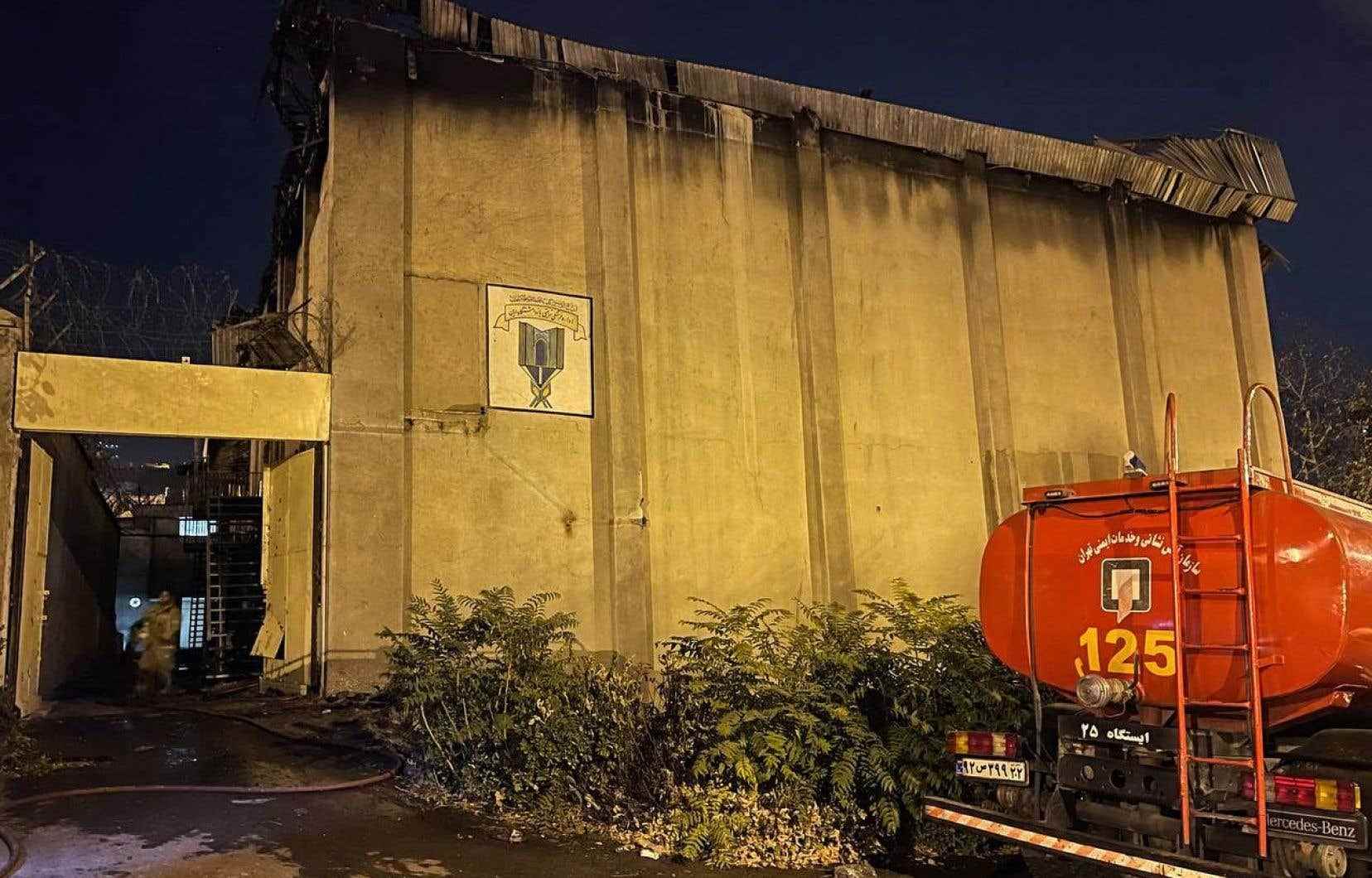At least four inmates died and around 60 were injured in a fire at Evin prison in Tehran, after a month of protests against the death of young Iranian Mahsa Amini, the Judiciary announced on Sunday.
According to the authorities, “thugs” caused clashes and a fire in this infamous detention center on Saturday evening, before the situation returned to normal, but NGOs have questioned this version.
“Given how normal the lying of official officials has become, we do not accept official explanations,” retorted Oslo-based Iran Human Rights (IHR), claiming to have received reports that guards had sought to encourage prisoners .
According to the Judicial Authority, “four prisoners, sentenced for theft, died after inhaling smoke and 61 were injured, four of them seriously”.
The official Irna news agency said the incidents had ‘nothing to do’ with protests following the September 16 death of 22-year-old Mahsa Amini, which entered its fifth week despite a crackdown that left at least 108 people dead. , according to IHR.
On videos posted on social networks, gunshots and the sound of explosions were audible in the evening around the prison, where foreigners are detained in particular and which is known for its mistreatment of political prisoners.
Hundreds of people arrested during protests over the death of Mahsa Amini have reportedly been sent to Evin, sometimes dubbed “Evin University” because of the large number of intellectuals held there.
‘Protect prisoners’
After the fire, several NGOs as well as the United States expressed concern for the prisoners, but several foreign detainees were able to contact their families.
“Prisoners, including political detainees, are completely defenseless” in Evin, said Hadi Ghaemi, director of the New York-based Center for Human Rights in Iran (CHRI).
Amnesty International’s Secretary General, Agnès Callamard, for her part, stressed that the Iranian authorities had “a legal obligation to respect and protect the life and well-being of all prisoners”.
Among the foreign detainees are the Franco-Iranian academic Fariba Adelkhah and the American Siamak Namazi.
Fariba Adelkhah’s support group said they had “reassuring” news and Siamak Namazi’s US attorney said he had “been moved to a secure area of the prison”.
The family of Austrian detainee Massoud Mossaheb said he was alive but suffering from smoke inhalation. The other Austrian prisoner Kamran Ghaderi is also safe.
Similarly, according to the Italian Foreign Ministry, Alessia Piperno, an Italian globetrotter arrested on September 28 and detained in Evina, is doing well.
Australian scholar Kylie Moore-Gilbert, who was detained in Evine, said she learned from relatives of the political prisoners that they were “all safe”.
The sister of a US citizen detained in Evin, businessman Emad Shargi, tweeted that her family was “worried to death”.
“Iran bears full responsibility for the safety of our wrongfully detained citizens, who must be released immediately,” the United States warned.
” Much more “
According to NGOs, demonstrations took place in the night in solidarity with the detainees of Evin, then on Sunday, in particular at the University of Tehran, after a new day of protests on Saturday under the slogan “The beginning of the end! ” power.
Despite the closure of the surrounding roads, demonstrators went to the prison, chanting in particular “Death to the dictator”, one of the main slogans of the protest, according to the sounds of videos shared by the online media 1500tasvir.
The death of Mahsa Amini was the spark of this wave of protest. The young Iranian Kurd died three days after her arrest by the morality police in Tehran who accused her of having violated the strict dress code in force in the country, imposing in particular the wearing of the veil for women.
Since then, Iranian women, many bareheaded, have been at the forefront of the movement. “The mullahs must get out! chanted women without veils at the Shariati Technical and Vocational College in Tehran on Saturday, according to an online video.
Iranian leaders accuse the United States, their sworn enemy, of fomenting “riots” to destabilize their country. On Sunday, Iranian diplomacy again rejected the “interference” of President Joe Biden, described as a “tired politician”.
The protests in Iran are the largest since those in 2019 against rising gasoline prices in that country.
But according to Carnegie Europe analyst Cornelius Adebahr, it takes “much more than protests and sanctions” to topple the Iranian regime.
